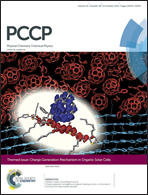A PtRu catalyzed rechargeable oxygen electrode for Li–O2 batteries: performance improvement through Li2O2 morphology control
Abstract
Albeit ultrahigh in energy density, the Li–O2 battery technology still suffers from the high overpotential of Li2O2 oxidation upon charging and the low cyclability. In the present work, we use Pt2Ru/C as the oxygen-electrode catalyst and study how it improves the cell performance and changes the reaction mechanism, as compared with a carbon electrode. Multiple methods, including X-ray diffraction, transmission/scanning electron microscopy, Raman spectroscopy, and cyclic voltammetry, have been employed for material characterization and reaction monitoring. The Li–O2 cell with a Pt2Ru/C catalyst shows lower charge voltage, higher specific capacity, and enhanced cyclability than does a carbon catalyst. The key for this improvement is ascribed to the morphology change of Li2O2. Whereas the Li2O2 formed in the carbon electrode is rod-shaped, the Li2O2 in the Pt2Ru/C electrode is mud shaped and closely attached to the electrode substrate, thus benefiting the subsequent Li2O2 oxidation. This study indicates that the charging performance of the Li–O2 battery can be improved not only by using proper catalysts, but also by controlling the Li2O2 morphology during discharge.


 Please wait while we load your content...
Please wait while we load your content...